Creating Characterization
Developed by Emily Shea, Playful Practicum 2022
Bring your character to life!
Design animal character puppets to support the development and retelling of self-created animal stories.
In this lesson, students will demonstrate their understanding of characters, setting, and plot by developing their own animal story with a main character, setting, and plot.
Students will demonstrate their understanding of overall story structure by telling an animal story that includes a beginning, middle, and end.
Materials
- Brown paper bags
- popsicle sticks
- yarn
- tape, glue (hot glue gun for teacher use)
- fabric pieces
- pompoms
- googly eyes
- recycled materials- paper towel tubes, plastic bottles, paper toilet tubes
- colored construction and white paper, some cut in strips
- pipe cleaners
- scissors
- feathers
- markers
- Socks
- Mini paper cups
- Paper straws
- hole-puncher
- Computer for Flipgrid
Set Up
Set up a table/ makerspace with supplies in either baskets, containers, or on paper plates for students to easily grab materials.
Materials will need to be sorted out in advance.
Cut paper into strips.
Prepare a list of expectations to review with students before using the makerspace.
Student’s Job
Today, I have a challenge for you. I want you to create an animal character puppet that you will use to tell your own animal story. Make your character come to life!
- To get started, I want to go over how to use the makerspace, how one might use the materials, and the names of all of the materials on the table. Then, I will show you some examples of previously created puppets. (Teacher goes over makerspace expectations and displays/ identifies materials to class)
- Let’s look at some puppets. There are so many different kinds of puppets you could make. We have a paper cup puppet, a paper bag puppet, a puppet on a stick, or even a sock puppet. I am going to show you how I might use this frog puppet to tell a story. (Teacher tells a story using the puppet) Did you notice how I changed my voice when using my puppet? Why do you think I did that? How do you think my frog puppet felt? He sounded a little sick with his low croaky voice. Do we always have to talk when using a puppet? Allow students time to talk and discuss uses of puppets. Now, I’ll name an animal and you pretend to sound like that animal. If I say cow, how do you think a cow might sound if it could talk?
Now, we all need to think of an animal character we would like to create. Do not tell anyone what you have in mind just yet. Let’s get in a circle and play a little game. You are going to act out the animal character you chose for the class. We will have to guess your animal! For example, I have the idea of creating an elephant puppet. I am going to act out an elephant by swaying my arm around like a trunk. Can you guess my animal? Let’s take turns acting out our animals.
- If you still need to plan your ideas out, I will leave some paper and pencils on the table for those who would like to sketch out their character ideas.
- You will have thirty to forty minutes to create your puppet using the materials on the makerspace table. When you are done creating your puppet, I want you to find a partner to discuss your puppet with. You and your partner will help to critique and refine one another’s work by sharing ideas. Do I need to add anything to my puppet? Should I take something off? Take a moment to reflect and practice giving your character a voice.
- I noticed you have completed your puppets and we have cleaned up our area. For the next twenty minutes, I just want you to begin playing with your puppets. What does playing with your puppets look like? How will you disguise/change your voice to pretend to be your character? Tomorrow, we will start thinking of stories to tell using our puppets as the main character. Think of a name for your puppet so you can introduce it tomorrow.
Day 2
- Morning Meeting
Let’s introduce our animal character puppets. We are going to go around the circle to share our puppets. When it is your turn, I want you to say, “This is ______ and she/he is a ________.” For example, this is Molly and she is a turtle. - The learning target says, “ Today I will create an animal character puppet so I can tell my own animal story. I’ll know I’m successful when
– I have created a story with a clear beginning, middle, and end.
– I have developed a character, a setting, and a plot with a problem and solution.” - Here is the checklist I will use to assess you. (Checklist includes message/lesson/ moral for an extra challenge)
- Today, I am going to show you again how you might tell a story using your puppet. This time I will do it using the checklist as my guide. (Teacher tells a story using a puppet with the checklist projected or printed out for students to see. Teacher checks off all areas of the checklist as the teacher tells a story.)
- To begin, I want you to practice telling your story to your partner. Have your partner follow the checklist to make sure you have included all the necessary story elements and that you have a clear beginning, middle, and end.
Day 3- 7
(Note- This process may take several days to complete. If students are unfamiliar with Flipgrid, you will need a trial day for the students to practice recording. Take the time to stop and discuss the recorded videos with the class and highlight all of the successes and areas for improvement. Make a quiet recording space for students. Allow students to practice during reading center rotations.)
- You may choose to record yourself on Flipgrid or to perform your story for the class.
- After you finish, we will take turns performing or showing your Flipgrid videos to the class.
(Students could create settings backdrops for their characters. Students and teachers could create a puppet theater out of boxes or wood.)
Further Challenges:
Have students create a background (setting) for their puppet.
After performing the story orally, students can write and illustrate it.
Students can use the puppets to show how characters interact in a story. Allow students to play with the puppets with a partner and make a video together of their characters interacting.
Students can use the puppets to learn how to change their voice when reading dialogue.
Use puppets for SEL lessons.
Teacher’s Job
Standards Alignment
RL.2.5. Describe the overall structure of a story, including describing how the beginning introduces the story and the ending concludes the action.
RL.2.7. Use information gained from the illustrations and words in a print or digital text to demonstrate understanding of its characters, setting, or plot.
Prepare/ Background Info
Read and study animal stories for several weeks. Students are familiar with character, setting, and plot. Students have identified problems, solutions, and messages in a text. Students have mapped out the sequence of events in the middle, beginning, and end of a story The students have been working on comparing and contrasting stories and their story elements.
Effective Facilitation
- Set expectations for makerspace and materials.
- Call students one by one to the table to select their materials.
- Allow students choice on how they want to prepare their puppets.
- Use a hot glue gun for googly eyes or hard to stick parts.
- For the first part of the lesson, students will work independently on creating their own puppets. They may ask classmates for some ideas or assistance.
- During the production of the animal stories, students may pick a partner to tell their story to. Partners will listen and check the checklist for all required information.
- Allow them to work with someone that they feel comfortable with.
- If Flipgrid is new to the students, you will need a trial day.
Recording videos is best in a quiet space. Allow students to do their recording during center rotations to limit the noise volume in the room.
Play to Notice
Child-Centered
Choice
Challenge
Active
Social Support
Making Learning Visible
Content Matter to Notice
Character- Character traits/ description, appearance, background
Setting- Setting is more than just where does the story take place? Material Culture- Human and Natural Elements
Time period
Plot- A plot has several parts. Problem and solution, major and minor events, the lesson/message/ moral
SEL to Notice
Some students will need extra support working independently and rely heavily on the teacher for helping to create their puppet. Encourage those students to plan out an idea on paper before taking materials from the table especially if they lack planning and organizational skills. If a student is quiet and reserved, mention you will watch the Flipgrid video privately and/ or support them with performing. Flipgrid videos can be exciting but also embarrassing for some students. Not all students will want their video displayed. Have students recognize at least 2 things about the student’s video/ performance that they enjoyed. Some students will feel more comfortable writing a script before they record their video to help them remember what they want to say.
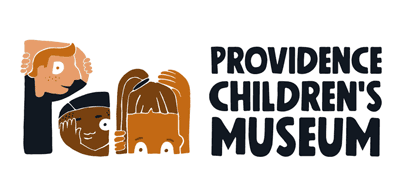

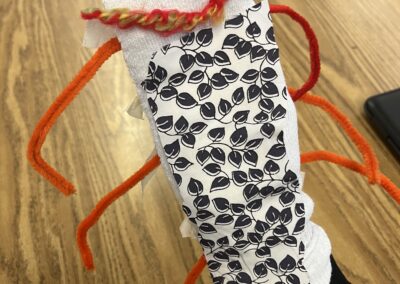
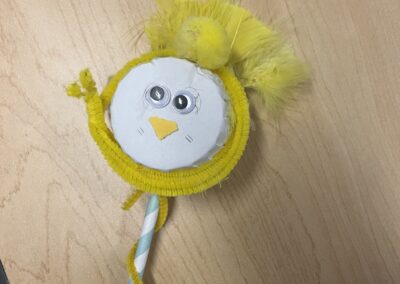
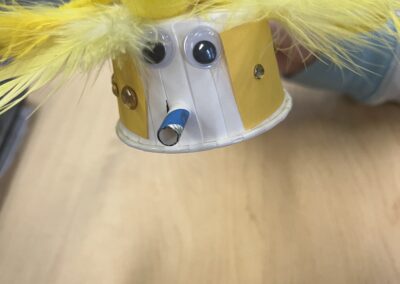
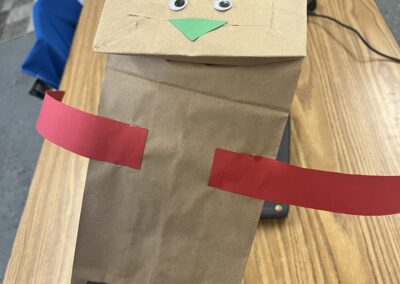
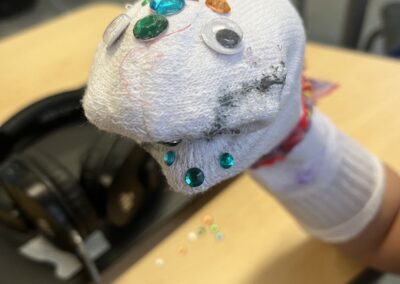
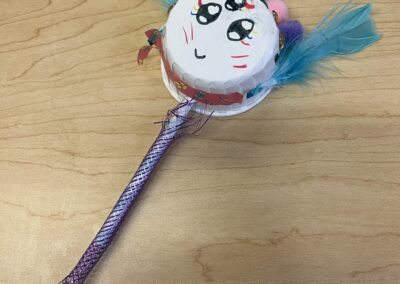
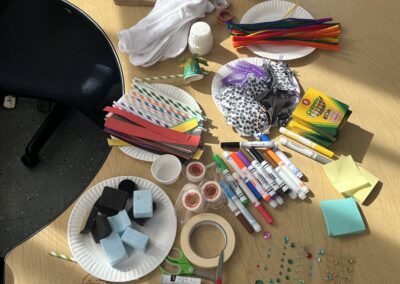
0 Comments